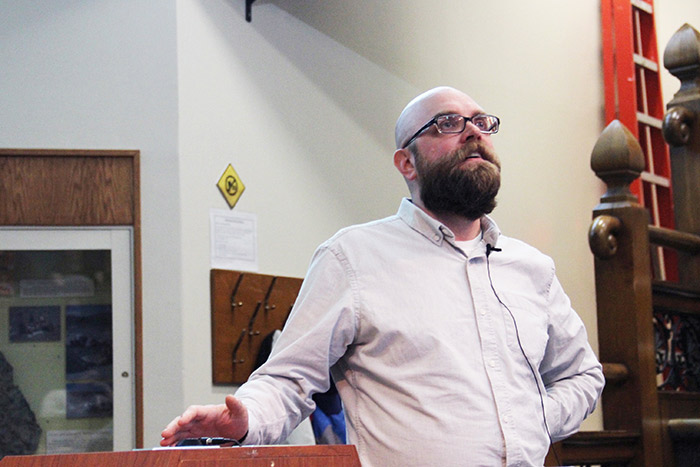“Most spiders are small. I don’t know if that’s a comfort to you or not,” Dean of Students and Department of Natural Resources Associate Professor Christopher Buddle said to the audience on Nov. 10 at Cutting Edge Lectures in Science, hosted by the Redpath Museum.
As an arachnologist studying the biodiversity of spiders and insects in Arctic systems, Buddle is no stranger to the hostile environments of the North. Much of his research addresses the critical situation concerning climate change that has been becoming an increasingly significant factor in Arctic habitats.
“We know that the Arctic is changing,” Buddle said. “It’s very alarming, because the rate of which things like climate change happen in the North is very, very rapid.”
The far northern environments, which Buddle refers to as “the fragile Arctic,” most severely feel the effects of changing climates. Through his fieldwork in the arctic, Buddle hopes to understand the consequences of climate change on the northern ecosystems and to benchmark the state of its biodiversity.
During one of his northern expeditions, Buddle and his research team collected approximately 30,000 spiders, consisting of 14 families and 306 different species. The Arctic is home to a wide array of spider diversity and taxonomy. The Arctic species exhibit an impressive degree of plasticity and adaptability in order to thrive in challenging conditions.
In 2012, Buddle and his graduate students found that more than half of the female wolf spider population were parasitized by wasps in the Yukon—an unusually high rate. The parasitic relationship begins when the wasp latches on to the spinneret of a female spider and lays its eggs in the egg sac of the host. The wasp eggs hatch and subsequently devour the spider.
A particularly memorable arachnid encounter occurred when Buddle and two research associates accidentally stumbled upon a new species of pseudoscorpion under rocks in the Yukon. Coincidentally, pseudoscorpions—a close relative of scorpions and spiders—were also discovered by complete chance in the 1980s.
“That’s not how we think of science working, by accident, but I think it works by accident more often than not,” Buddle said.
Upon further investigation into these mysterious species, researchers found that pseudoscorpions can survive without breathing for 17 days in deoxygenated water—a discovery that was later reported on by the BBC.
Buddle discussed the importance of species identification in order to track and understand the real and profound effects that occur as a result of climate change.
“We need to tell the stories of species. They have a story to tell, we just don’t know the stories,” Buddle said.
Natural history, as described by Buddle, is usually presented as dead relics in dusty museums. Instead, it ought to be considered as a foundational piece of how humans perceive nature and how field observations are a valuable component of the scientific method. Unfortunately, the number of courses and textbooks on natural history have been decreasing over time. Nonetheless, many passionate professors at McGill are working to integrate natural history back into classes.
“Always be open to working [with] people. They know a hell lot more than you do,” Buddle said. “Collaboration is key, and I think almost most importantly, [is] curiosity, wonder, and passion […] let’s make sure that keeps happening.”









